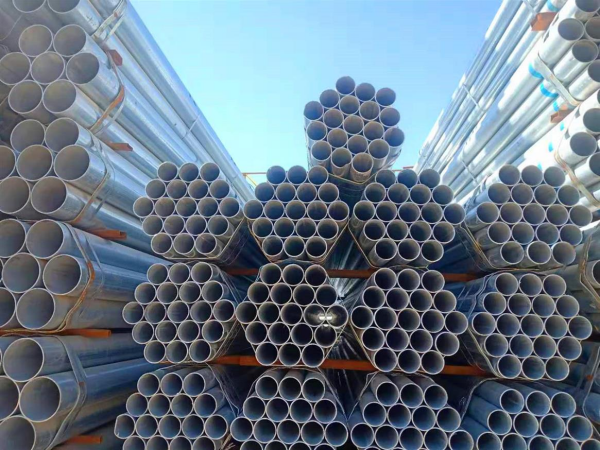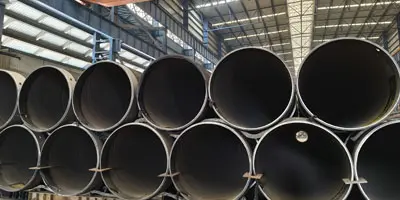In the circuit transformation of home decoration and industrial equipment, the selection of appropriate threading pipe materials is crucial to the stability and safety of the electrical system. Currently, commonly used threading pipes include PVC pipes and KBG pipes (galvanized steel pipes). These two pipes have their own advantages and disadvantages in different application scenarios. So how to choose the right pipe according to needs during the decoration process? The following will analyze in detail the characteristics, advantages and disadvantages, and applicable scenarios of PVC threading pipes and galvanized KBG pipes to help you make a wise choice.
1. PVC threading pipe
PVC threading pipe is a common plastic pipe, the main component of which is polyvinyl chloride (PVC), and other chemical components are added during the production process to improve its heat resistance, toughness and ductility. As an economical pipe, PVC pipe is widely used in the home improvement market, especially in strong and weak electricity transformation projects.
Advantages of PVC plastic pipe
Low material and construction costs: The raw material price of PVC pipes is relatively low, and the production process is relatively simple, so the overall cost is lower than that of metal pipes, which is suitable for users with limited budgets.
Convenient construction: Since PVC pipes are light and flexible, they are easy to operate during installation, and are also easy to cut and connect, which can significantly reduce construction time.
Excellent insulation performance: PVC material has good insulation performance and will not conduct electricity. It can effectively ensure line safety and reduce the risk of short circuit in the electrical system.
Disadvantages of PVC plastic pipe
Low strength: Compared with galvanized steel pipes, PVC pipes have poor strength and pressure resistance, especially under high load or external force, which is easy to deform, affecting the service life.
Poor flame retardancy: PVC pipes have limited flame retardancy. Once they encounter a fire source, although they will delay combustion, it is difficult to completely prevent the spread of flames. They are not suitable for places with high fire protection requirements.
Insufficient connection firmness: The connection stability between PVC pipes and pipe fittings is weak, and long-term use may cause loosening, affecting the line protection effect.
Poor shielding performance: PVC pipes themselves do not have shielding function and cannot prevent external electromagnetic interference. Therefore, when transmitting weak current signals, they may be interfered by external electromagnetic fields, affecting signal quality.
Common specifications
The specifications of
PVC threading pipes are usually 16mm, 20mm, 25mm, etc. The appropriate specifications can be selected according to the cable size and installation space.
Applicable scenarios
PVC threading pipes are mainly suitable for the transformation of strong and weak power lines in home decoration. They are suitable for wire protection in ordinary environments, especially for home places with low durability requirements.
2. Galvanized pipe
KBG pipe is a thin-walled galvanized steel pipe that adopts double-sided cold galvanizing process and has good heat resistance, pressure resistance and fire resistance. Compared with PVC pipes, KBG pipes have stronger structural strength and reliability, so they are more widely used in the field of tooling.Many types of steel pipes can be galvanized, including welded steel pipes (such as ERW pipe, LSAW steel pipe, SSAW steel pipe),
seamless steel pipes, square and
rectangular pipes, and thin-walled steel pipes. By galvanizing, these steel pipes are significantly improved in terms of corrosion resistance and durability, especially in environments with high humidity or outdoors.
For example, galvanized seamless steel pipes are often used for high-pressure fluid transportation, while galvanized thin-walled steel pipes are often used for wire routing, providing good insulation protection and anti-interference. The galvanizing process not only extends the service life of steel pipes, but also broadens its applications in construction, plumbing and electrical systems.

Advantages
Heat resistance, pressure resistance and fire resistance: The heat resistance and pressure resistance of galvanized steel pipes far exceed those of PVC pipes, and their fire resistance is excellent, not easy to burn, and suitable for environments with high safety requirements.
Not easy to bend and deform: KBG pipes have good rigidity and deformation resistance, are not easily deformed by external forces, and can better protect the wires in the pipe.
Firm connection: The connection between KBG pipe and pipe fittings is stable, ensuring continuous and reliable cable protection and effectively preventing loosening.
Good heat dissipation performance: The thermal conductivity of metal materials enables KBG pipes to quickly dissipate heat when current passes through, reducing the loss of wires caused by heating.
Good shielding ability: Galvanized steel pipes can shield external electromagnetic interference, especially suitable for weak current lines, which helps to maintain signal stability.
Disadvantages
High material and construction costs: The raw material cost and construction complexity of KBG pipes are higher than PVC pipes, especially in the cutting and installation process. More tools and techniques are required, resulting in an increase in overall costs.
Complex construction: Due to the hard material of KBG pipes, special bending tools are required during the installation process, and the welding and cutting process requirements are high. The construction is difficult and the installation time is long.
Common specifications
The common specifications of KBG pipes are 16mm, 20mm, 25mm, etc., similar to PVC pipes. The specification selection depends on the cable size and specific application requirements.
Applicable scenarios
KBG pipes are usually used for the transformation of strong and weak current lines in industrial projects, such as commercial office buildings, factory workshops and other environments with high requirements for electrical line safety. In addition, KBG pipes are also suitable for the pipeline layout of fire protection, power and emergency systems, and can better meet the needs of high temperature, high load and anti-interference.
3.Which is better, galvanized pipe or PVC pipe and how to choose?
When selecting pipes, the installation environment, budget, construction conditions and circuit protection requirements should be comprehensively considered. Here are a few suggestions:
Home improvement circuit transformation: If it is an ordinary residence or a cost-sensitive home improvement project, PVC pipe is a more economical choice, suitable for general power and communication line protection. For line transformation that does not involve high temperature and high pressure, PVC pipe can fully meet the needs.
Industrial circuit transformation: For public or commercial places such as office buildings, shopping malls, and factories, KBG pipes are more suitable because their circuit systems are complex and require higher safety. Such places have high requirements for pressure resistance, heat resistance, and anti-interference performance. KBG pipes have stronger fire resistance and anti-electromagnetic interference capabilities, which can effectively ensure the stable transmission of power and weak current signals.
Special needs: If the circuit needs to pass through an area with fire hazards or a lot of electromagnetic interference, it is recommended to choose KBG pipes to increase the safety factor. In situations where there is a lot of economic pressure or no special needs, PVC pipes can be chosen to save costs.
4.Conclusion
One of the reasons PVC pipe is widely used is cost. PVC is cheaper than galvanized steel. While PVC is a cheaper alternative to galvanized steel, it has a much shorter lifespan. So overall, galvanized steel pipe is a more economical long-term alternative than PVC.Whether it is PVC pipes or galvanized KBG pipes, their respective advantages and disadvantages and applicable scenarios are obviously different. In the renovation of home and industrial circuits, choosing the right threading pipe can not only effectively protect the circuit system, but also improve construction efficiency and cost-effectiveness. I hope that through the above comparative analysis, you can choose the most suitable pipe according to actual needs to ensure the safe and stable operation of the electrical system.






 English
English Español
Español بالعربية
بالعربية











 Phone :
Phone :  Whatsapp :
Whatsapp :  Email :
Email : 


